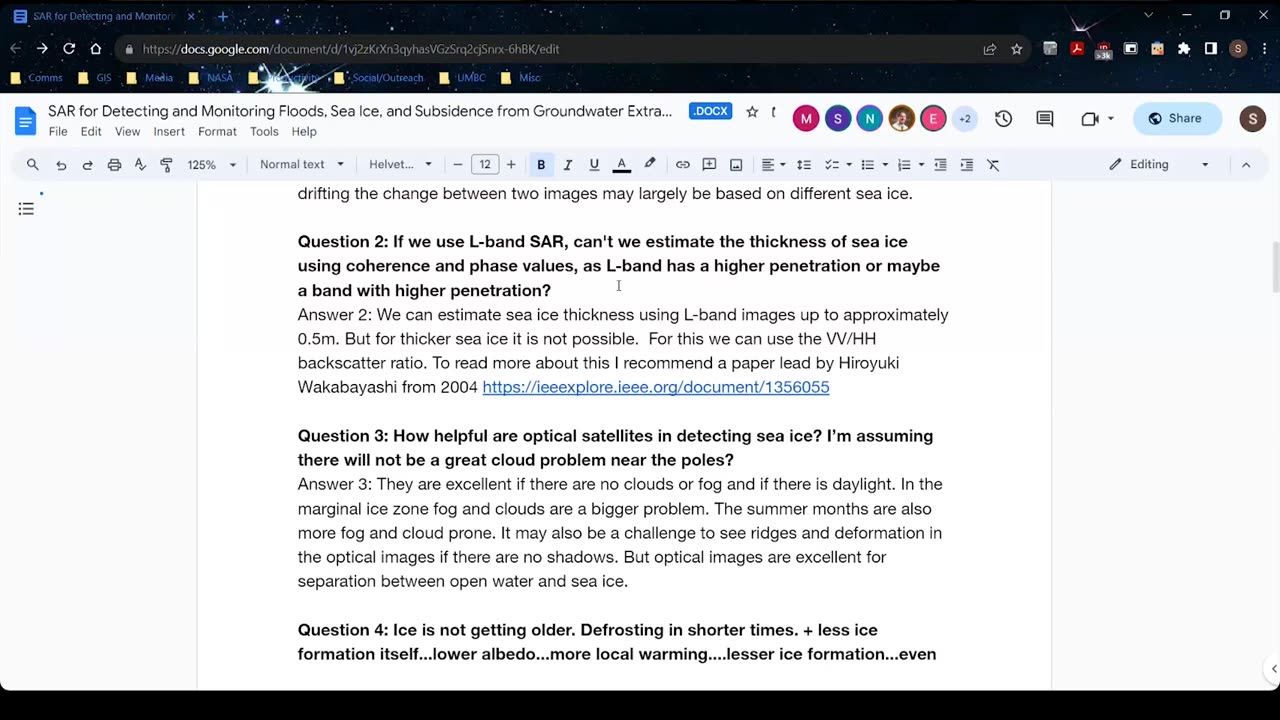Premium Only Content

NASA ARSET: Detecting and Monitoring Sea Ice with SAR, Part 1/3
SAR for Detecting and Monitoring Floods, Sea Ice, and Subsidence from Groundwater Extraction
Part 1: Detecting and Monitoring Sea Ice with SAR
Trainers: Erika Podest (JPL)
Guest Speakers: Malin Johansson (The Arctic University of Norway)
Over the past decade shipping traffic in the Arctic has expanded rapidly and as Arctic sea ice recedes due to climate change, an increased number of vessels with low ice-class are venturing into the region. One hazard that these ships face is striking sea ice and among the most serious hazards is becoming surrounded and stuck in sea ice. The pressure of the ice on the ship’s hull can cause severe structural damage, which can lead to oil spills. The entrapped ship can also drift towards shallower waters resulting in grounding, endangering its crew, passengers, or cargo. In addition, the loss of sea ice makes coastlines become vulnerable to bigger waves from storms, leading to accelerated erosion that impacts people and wildlife. Detecting and monitoring sea ice can help identify areas at risk for ships and also help inform on mitigation strategies along coastal areas in the Arctic. This session will provide a summary of the theory of SAR for detecting sea ice followed by a demo using SAR data with the SNAP Toolbox to generate maps of sea ice.
-
 LIVE
LIVE
SynthTrax & DJ Cheezus Livestreams
12 hours agoFriday Night Synthwave 80s 90s Electronica and more DJ MIX Livestream Variety Visuals / Variety Tracks Edition
265 watching -
 1:46:59
1:46:59
Glenn Greenwald
6 hours agoNew Russiagate Disclosures Show Depths of CIA & FBI Guilt; Trump Forcing Universities to Adopt DEI Programs Only for Jewish Students; The "Pogrom" at FSU | SYSTEM UPDATE #496
54.6K44 -
 LIVE
LIVE
FusedAegisTV
21 hours agoOFFICIAL Evo 2025 Day 1 Co-Stream - Las Vegas, NV ∥ 17 TOURNAMENTS!!
225 watching -
 2:10:07
2:10:07
The Illusion of Consensus
2 hours agoDEBATE: Alex Berenson vs Dave Smith on Holocaust, Israel/Gaza
23.3K3 -
 8:07
8:07
MattMorseTV
1 day ago $9.73 earnedTrump just LOWERED PRICES by 75 PERCENT.
52.9K94 -
 51:41
51:41
BonginoReport
10 hours agoParalyzed Woman Blames COVID-19 Jab, Sues Moderna! - Nightly Scroll w/ Hayley Caronia (Ep.103)
108K75 -
 LIVE
LIVE
Mally_Mouse
1 day agoFriend Friday!! - Let's Play! - Minecraft
60 watching -
 LIVE
LIVE
Gore TV
1 hour ago💀 STAY DOWN, BRO 🤣 | Vapingamers Needs a Rez… Again 😏
30 watching -
 LIVE
LIVE
AirCondaTv Gaming
3 hours ago $0.02 earnedGolf with Your Friends & Empyrion - These Ball Touches Are Out Of This World (Collab)
20 watching -
 LIVE
LIVE
VapinGamers
1 hour ago $0.01 earnedCommunity Co-Stream Division 2 with GoreTV and BookPrince! - !music !rumbot
17 watching